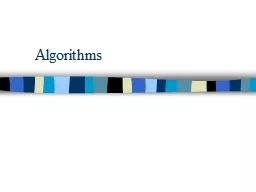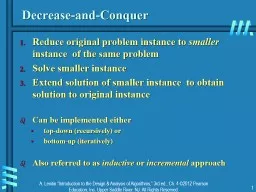PPT-8 Algorithms And Issues In
Author : dandy | Published Date : 2023-11-09
Server Software Design Dr M Dakshayini Professor Dept of ISE BMSCE Bangalore 81 Introduction The design of server software Fundamental issues connectionless
Presentation Embed Code
Download Presentation
Download Presentation The PPT/PDF document "8 Algorithms And Issues In" is the property of its rightful owner. Permission is granted to download and print the materials on this website for personal, non-commercial use only, and to display it on your personal computer provided you do not modify the materials and that you retain all copyright notices contained in the materials. By downloading content from our website, you accept the terms of this agreement.
8 Algorithms And Issues In: Transcript
Download Rules Of Document
"8 Algorithms And Issues In"The content belongs to its owner. You may download and print it for personal use, without modification, and keep all copyright notices. By downloading, you agree to these terms.
Related Documents











![[READING BOOK]-Algorithms JavaScript Explains Algorithms with Beautiful Pictures Learn](https://thumbs.docslides.com/970728/reading-book-algorithms-javascript-explains-algorithms-with-beautiful-pictures-learn-it-easy-better-and-well-easy-learning-java-and-design-patterns-and-data-structures-and-algorithms-book-9.jpg)
![[FREE]-Algorithms JavaScript: Explains Algorithms with Beautiful Pictures Learn it Easy](https://thumbs.docslides.com/973922/free-algorithms-javascript-explains-algorithms-with-beautiful-pictures-learn-it-easy-better-and-well-easy-learning-java-and-design-patterns-and-data-structures-and-algorithms-book-9.jpg)
![[eBOOK]-Easy Learning Data Structures Algorithms ES6+Javascript: Classic data structures](https://thumbs.docslides.com/975195/ebook-easy-learning-data-structures-algorithms-es6-javascript-classic-data-structures-and-algorithms-in-es6-javascript-easy-learning-javascript-and-design-and-data-structures-and-algorithms-book-3.jpg)
